Interactive Fellows Friday Feature!
Join the conversation by answering the TED Fellows weekly question on Facebook. This week, Sarah Jane asks:
“How could we use diving and performing arts to transform science education? Or art & environment?”
Click here to respond!
Are you really going to live in an underwater community?
Yes, the Atlantica Expedition is a very exciting project that will commence operation in July of 2012. It’s a 90-day, undersea habitat mission. The mission commander is Dennis Chamberland. He’s an Aquanaut and a seasoned explorer with a background as a NASA bioengineer. It’s his dream that we are building, and this is a first step towards permanent undersea colonization.
The mission will work continuously and comprehensively towards diagnosing ocean health. The Atlantica Expedition will be a large-scale laboratory. We are pleased that we have this opportunity to create a different kind of thinking. We would like to teach a zero-waste policy, for instance. And we’re developing education programs to link with the expedition itself. We’re looking at ways we can take the aquatic-stewardship thinking to a school environment and connect with communities around the world, particularly at primary school community levels. Included is another Australian, Lloyd Godson, and we are looking at creating a “Down Under” program, connecting with schools live via the Internet while we’re underwater.
I will be participating as an in-water Aquanaut, being able to dive and live underwater with the core Aquanauts. Of course, as with my Aquabatics Research Team Initiative, I’m interested in exploring human performance potentials. I’m particularly interested in how we can look at adapting the body physiology. How can we increase oxygenation to the body? How can we best perform for long duration without sunlight? How can we work more effectively within a confined space? And how can we keep good humored, express ourselves, and have fun and play through the marriage of aquatic arts and sciences?
This will be a big change from the environment you were diving in when you came to TED2010.
Yes, this is unlike the diving I was doing on the west coast of Tasmania. Tasmania is a really unique environment. Macquarie Harbor for instance is black — it is completely black water. It is stained by the tannin, which comes from the local tea tree and buttongrass. It boarders a pristine World Heritage wilderness area. So it’s not dirty at all, you can drink it. But it’s like a very black tea, literally stained. I was exploring the creative potentials of zero-visibility diving on the human body whilst working for local industry as a contract diver.
The water in the Florida lagoon where the Atlantica Expedition will commence is what you traditionally think of when you think of the ocean — it’s blue and full of life. It’s near the Gulf Stream so it has a vast area of changing marine life that flows through it. So it’s particularly important that we work there, so that we can provide essential monitoring for that flow.
At TED, while talking about my work, one of the many extraordinary people I met, Ronnie Rubin, said, “Sarah, it’s very important that you come up to the light.” She said, “Literally, you’re working in darkness. You’re working underwater in zero visibility. And metaphorically and physically, it’s really important that you start to surface and come to the light.” It was an unusual perspective and an extraordinary challenge that was given to me.
I returned to regional Tasmania after having attended TED, and those words stuck with me.
Almost four months later, I had the opportunity to attend the Singularity University at NASA-Ames. I joined 80 extraordinary professionals from all over the world to look at all kinds of accelerating technologies. We had a really vast and intense program where we studied everything from biotechnology, bioinformatics, robotics, artifical intelligence, nanotechnology, entrepreneurship, space and physical sciences, computing, neuroscience, medicine, etc.
We explored how we, as a group, could start to make the connections to learn how these technologies could begin to solve some of the world’s “grand challenges.” We looked at the challenges of five areas: space, water, upcycling (a form of recycling), energy, and food.
I came back to Australia with not only a whole different set of insights and connections, but also a renewed sense of priority.
Since returning back to Australia, my challenge has been to look at how I could use accelerating technologies in my own field, in both the art sector and also the underwater technology sector. Specifically, underwater habitation as a means of addressing some of the world’s grandest challenges, and looking at the way we can make a significant contribution to the future.
Another Singularity University participant, Connor Dickie, and I set up an incubator platform for futurist thinking called BEST. It stands for Biological Enhancement Space Technologies. With the BEST initiative we are looking at ways in which we could work to contribute different kinds of innovative design thinking and solutions that address global challenges. We are developing creative platforms for the next generation of tools that might be required for a sustainable future in extreme environments.
We were most interested in the field of space, polar, and ocean territories. While polar and ocean territories are of course more accessible to us, we understand that the work we do in those areas is an analog to a space environment. As we’re thinking about the future, and the possibilities for future, we recognize that the responsibilities that we have for developing not only the exploration and the technology, but also the kind of thinking and philosophy that might be required to develop a sustainable, responsible future.
In regards to the Atlantica Expeditions, the BEST team will be looking at art and science opportunities to work with technologies and approaches that help us to become self-sufficient underwater. This includes looking at 3-D printing technologies that we might be able to use, using underwater local resources. We want to be able to create and build things without coming to the surface, and without introducing, for instance, heavy plastics and things into the environment.
Has the BEST initiative spawned any major projects?
Perhaps the most exciting one is a rather bold mission to join The Arctic Circle Expeditionary Residency program. We’ve been accepted, so this September, we will board an ice-class sailing vessel to the Arctic Circle. There are only three ice-class sailing vessels in the world. It’s lovely to think how we will have the romance of a beautiful sailing ship in this extreme, pristine territory.
We are going to try to imagine what we would take with us as new frontier explorers. In this day and age when we have access to so much technology and information and tend to live vicariously through our media, how do we experience the riches of the Arctic environment? And how could we best capture those experiences to share with people?
The purpose of the expedition is for artists and scientists to collaborate. We have proposed that we will use the experience as a testing ground, and imagine ourselves as new explorers of an analog to say, a polar Mars. So we have been brainstorming and preparing tools for our journey as contemporary nomads, and methedologies for recording the impacts of the experience towards a new documentary, a new performance and an exhibition of our experience.
As in the Atlantica Expedition, we are developing a 3D ice printer to build tools using the locally sourced materials. This is the kind of thinking that would be required if we were ever going to live in another climate. And it links very much to the ingenuity of the Inuits and the kinds of tools and solutions that they’re able to come up with in those kinds of environments, working with what they have.
We’re also looking at taking remotely controlled vessels that we’ll be able to put under water to take photos and collect small microbial samples. We’re looking at again using the local resources to perhaps build that out of pykrete. Pykrete is a material developed during World War II. It is made from compressing ice and fibrous pulp. Together, they become stronger than concrete.
We’re very excited about this expedition and how we can learn to deal with other realities of the expedition: the confined space of the crew, the experiences that we share together, the shock that our bodies have in the extreme conditions … we want to be able to prove that we can work to create and sustain life in the extreme environment. But we do not necessarily go there as explorers to conquer. We want to stroll around the edges of human experience. We want to be able to capture what it might mean to be a true explorer, without leaving a devastating impact, and without disrupting the environment too much. If we are disrupting it, we at least want to be measuring that disruption and understanding that disruption as we go.
Are you working on any other projects?
And I’m currently working to support a Melbourne-based kindergarten community on a project called “EcoCubby.” Children approximately the age of three are working with architects and their school communities to design and create an environmentally friendly cubby house. This will help these children and their communities embrace concepts of sustainability, and get really early age children starting to thinking about what they can create and what they can contribute.
I’m also working on a project called Liquid Uni. I’m interested in designing underwater cinematic tools for immersive education. I’m developing a platform looking at how we can integrate 3D virtual technology into a training environment underwater.
I originally wondered, “How can I have an underwater planetarium? How can I have a big dome space underwater, where people can be swimming around, looking at the stars? Wouldn’t that be beautiful?” From there, we could start to open up what full-bodied education might be. How we could learn in a completely new way, so that it’s not just about learning from a screen. It’s about learning from a truly immersive space, and understanding the teaching through the entire bodily interaction. And so the project began to form ….
It must be difficult to find the appropriate check-mark box when filling in “occupation” on standard forms! What does your family think of your work?
Well, I think they’ve come to expect the extraordinary. And they understand that I don’t do ordinary very well. Nothing surprises them anymore. My father and my grandfather were both divers. So they understand that drive and that passion. My mother painted, my aunt and cousins are professional musicians, and my great grandmother both painted and performed, so they understand the artistic drive. Combined, I think they get it. I know they worry about the lack of stability it brings. In some ways, they wish that I had a normal nine-to-five job. But that’s what families do — they care for you.
But otherwise, they get excited. And often a little bit nervous for me. [Laughs].
There are many aspiring social entrepreneurs out there who are trying to take their passion and ideas to the next level. What is one piece of advice you would give to them based on your own experiences and successes? Learn more about how to become a great social entrepreneur from all of the TED Fellows on the Case Foundation blog.
I think I’d have to say make sure that you are organized and focused enough to make sure that it’s sustaining. That you’re able to create projects and follow your passion in a way that has a life of its own, that has longevity as well. And that you are able to maintain a certain momentum, so that you can keep your energy high through the good times and the tough times. And you’re able to see it through.
So set yourself up with the tools — whether it be emotional or administrative — really spend time cultivating your little toolkit to empower yourself to be able to maintain that energy and that vigor and that rigor that comes with following through on a dream.
I say this because I have to remember it, too. I find myself in situations for months and months on end where I don’t have the resources to be able to do what I’d like to do. And I have to pare everything back and work it step by step by step and just do the best I can with what I have. And at the same time, make sure I have enough energy at all times to keep sight of the big picture and not be daunted.
I don’t necessarily have a pathway that’s laid out for me. I make it up as I go along. I’m treading new territories and making things happen. And it is genuinely important that I don’t just propose things but that I follow through and do them. If I could do anything differently it would be probably making sure that I had an income while I did that. Or that I could support myself better through that.
The ways that I’m successful in that is I try to create a bit of a balance. I make sure that I’m in the environment everyday, to clear my head, to change my thinking, to connect again. I try to make time for the physical, spiritual, intellectual and other aspects of my personality.
For example, I love, love dancing. I find time for it. I love everything from tango to salsa to contemporary dance … you put the music on and I will dance. In fact, I think we should be dancing underwater to remind us how precious the ocean is, and how fragile our life support is. Aquabatics celebrates and champions this awareness.
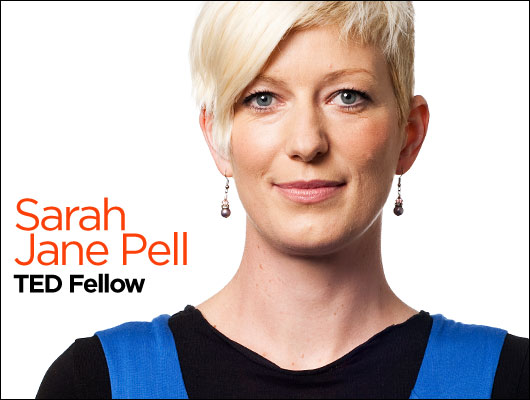
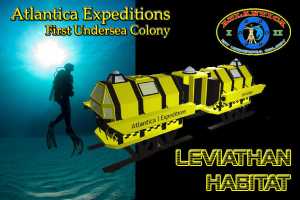
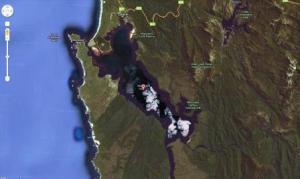
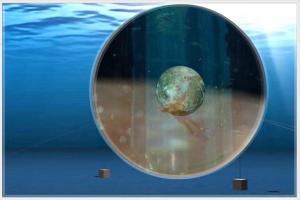
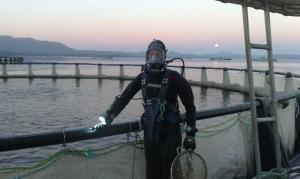
Comments (5)
Pingback: Colleen Flanigan crowdsourced her haircut at TEDGlobal - Entrepreneur News | Australian Society of Entrepreneurs
Pingback: Museum Lecture Series « chinutribeta